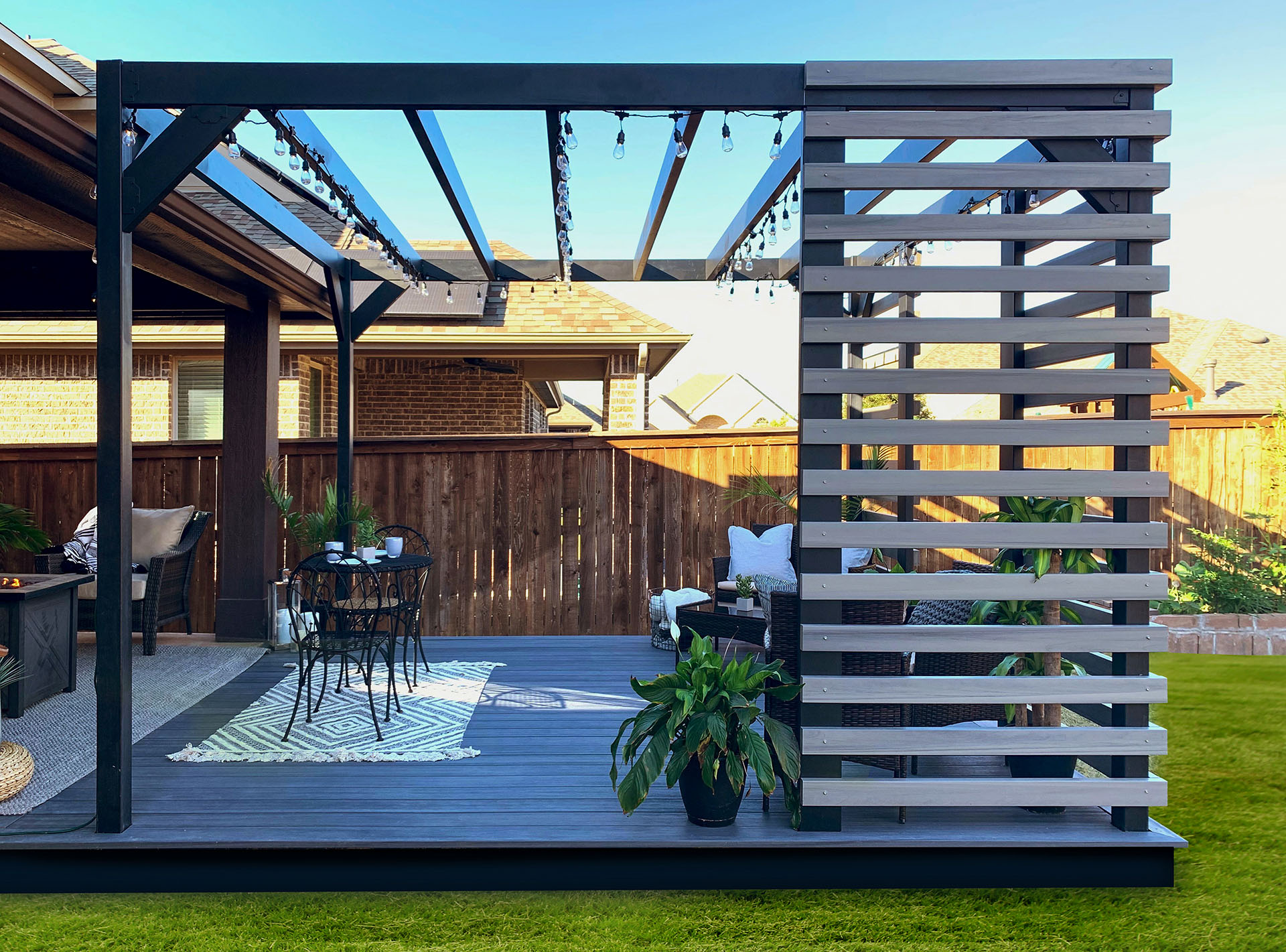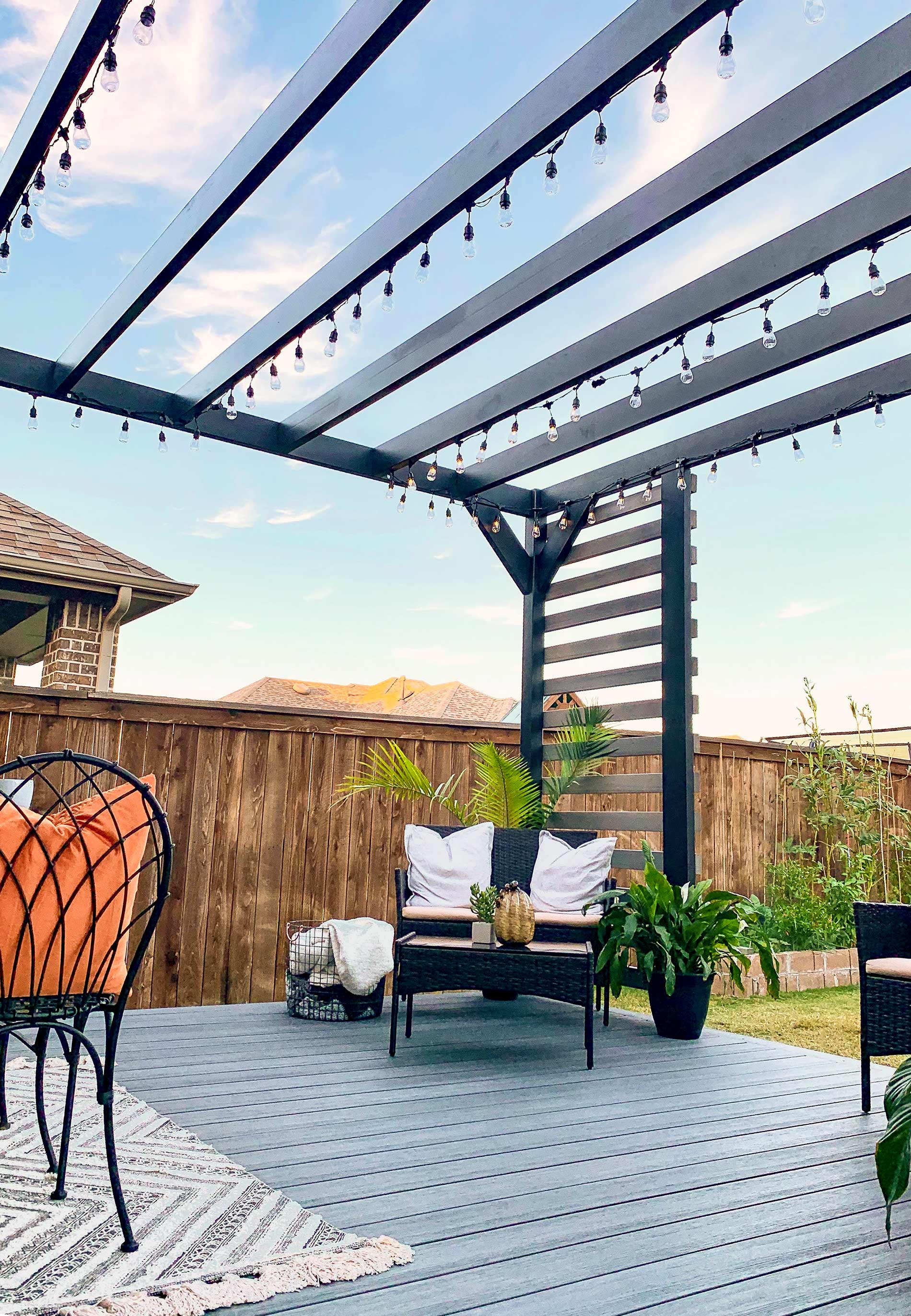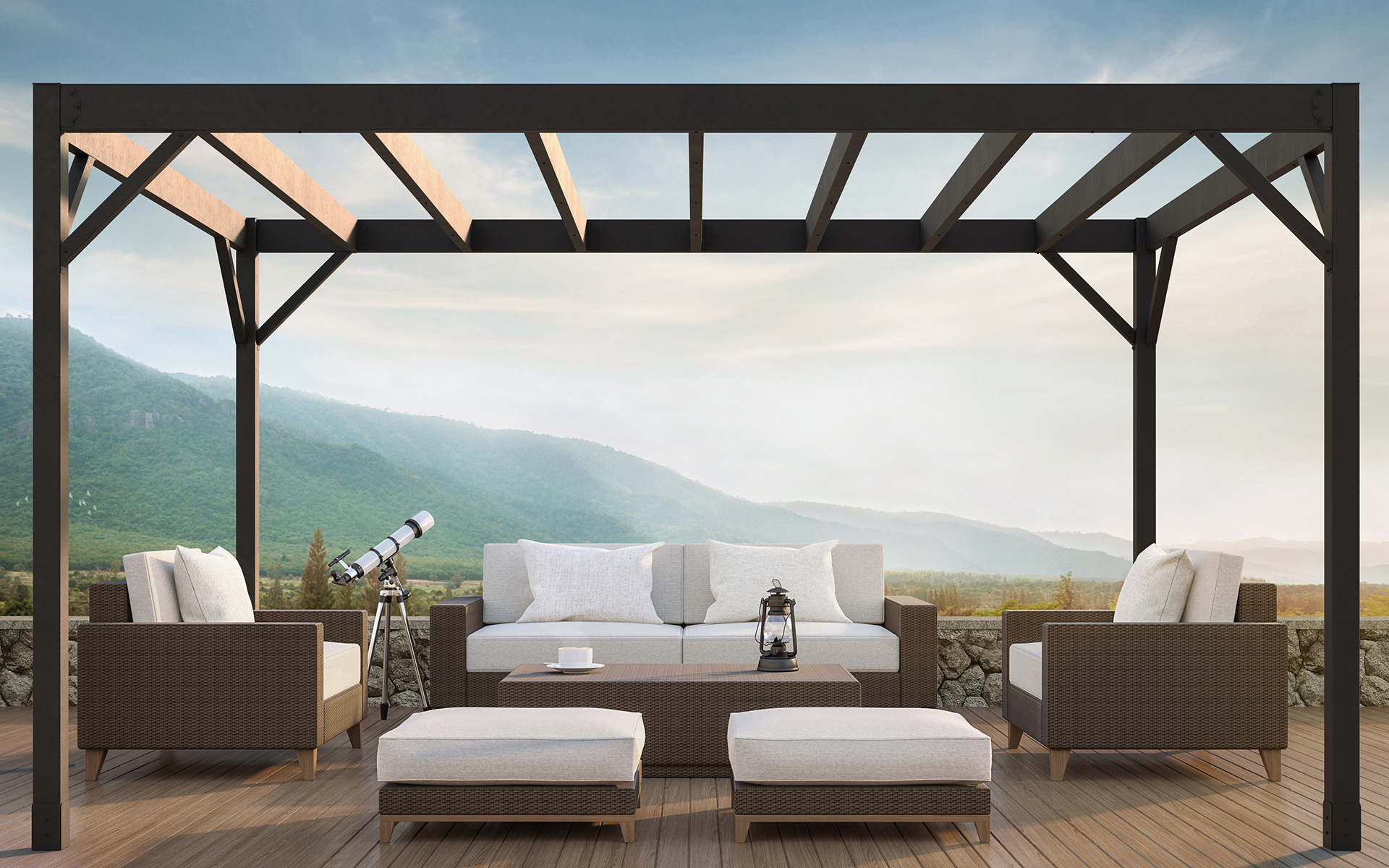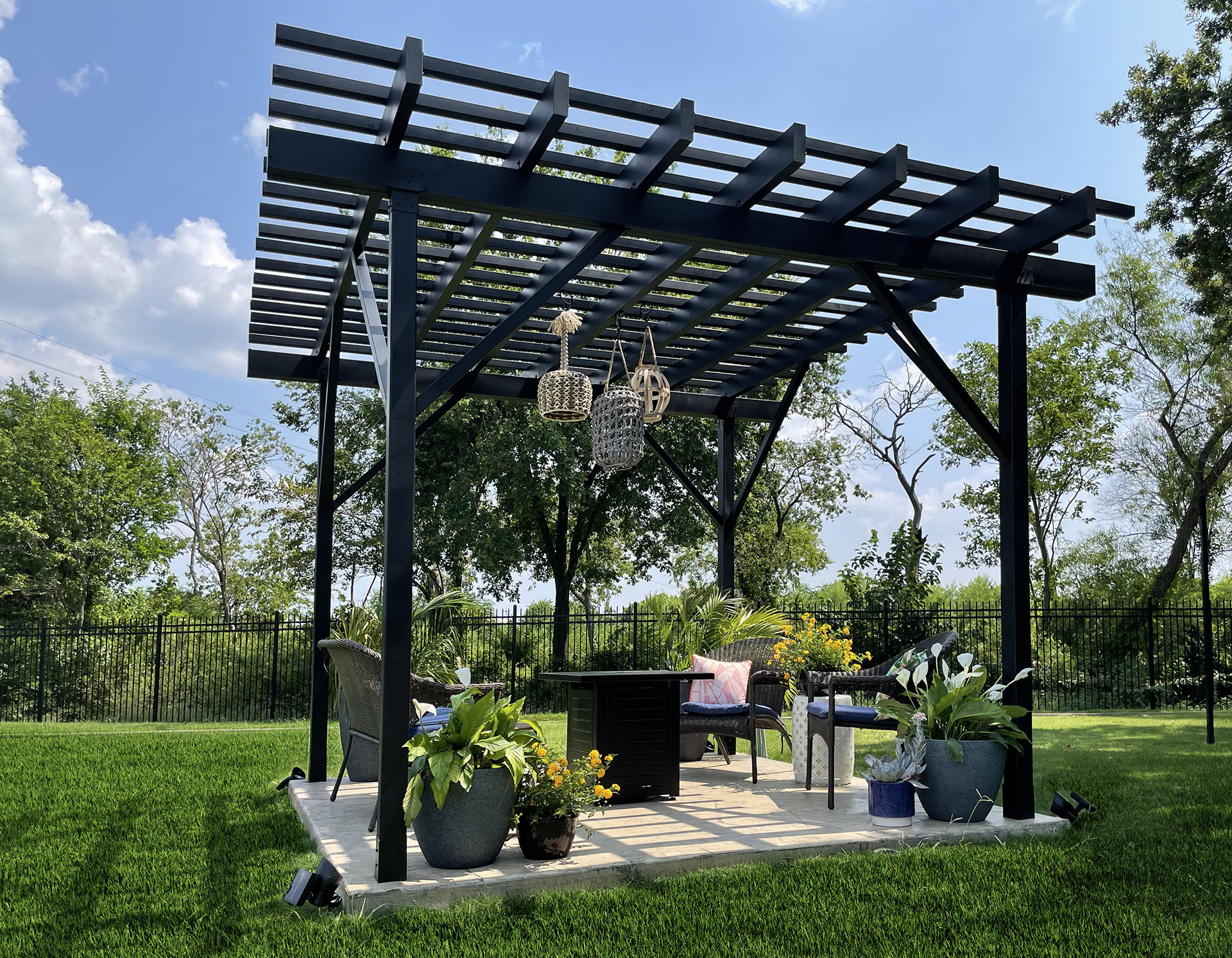╳

Get The Latest On Our Greatest
Subscribe to Our Company/Product Updates

Wednesday, November 12, 2025
As wildfire threats intensify across the country, contractors are increasingly focused on adopting forward-thinking construction practices and building materials to protect their clients and their properties. After all, new studies show that more than 80 percent of homes lost to wildland fires could have been saved if proper defensible space measures were in place.
The first five feet around a home are the most critical. Outdoor structures such as pergolas are often built within this high-risk zone: picture a pergola installed behind the house to maximize usable square footage. Because of their close proximity to the home, pergola material selection is critical.
The limitations associated with a traditional wood pergola
While nostalgic and charming, traditional pergolas made from wood are an outdated choice. And while fire-retardant treated (FRT) wood is marketed as a fire-safe option and does meet building codes for fire-hardened construction, it is important to understand the building material's limitations.
FRT wood is by nature, a combustible building material. Even if the wood pergola itself resists ignition, flames can still travel along the rafters and reach the roofline in seconds, putting the homeowners and their residence at risk. It's also worth noting that the promised fire-performance does not last forever. FRT wood requires ongoing upkeep to maintain its fire resistance properties, which puts extra responsibility on the shoulders of contractors and homeowners to stay safe.
Making things more complicated, dual-treated wood cannot be certified as fire-retardant and preservative-treated. Without third-party certification from a credible organization, a wood pergola does not meet code requirements for either standard. In other words, FRT wood pergolas cannot be considered fully fire-resilient and fully weather-resistant.


Fire-resistant pergolas made with steel deliver excellent fire performance
On the other hand, steel is a noncombustible building material that has proven itself to be a reliable and code-compliant choice for outdoor home improvement projects. Unlike wood, contractors who work with steel can deliver truly fire-resistant structures that reduce the risk of wildfire spread without any extra coatings or treatments. This is why many contractors living and working in WUI zones feel confident building with it. With tested fire-performance, steel pergolas successfully meet WUI and NFPA 1140 standards, helping reduce the vulnerability of a home and any surrounding structures.
What's more, fire-resistant pergolas made from steel are incredibly durable. They will not rot, warp or deteriorate after long-term exposure to moisture and tough weather conditions. To further preserve the structural integrity of a fire-resistant pergola and its appearance, leading outdoor building product manufacturers use a powder-coated finish that provides enhanced corrosion resistance and UV protection.
Contractors looking to deliver a safer, more resilient outdoor space can turn to a fire-resistant Evolution Steel Pergola from Fortress Building Products. Track one down today.


Search